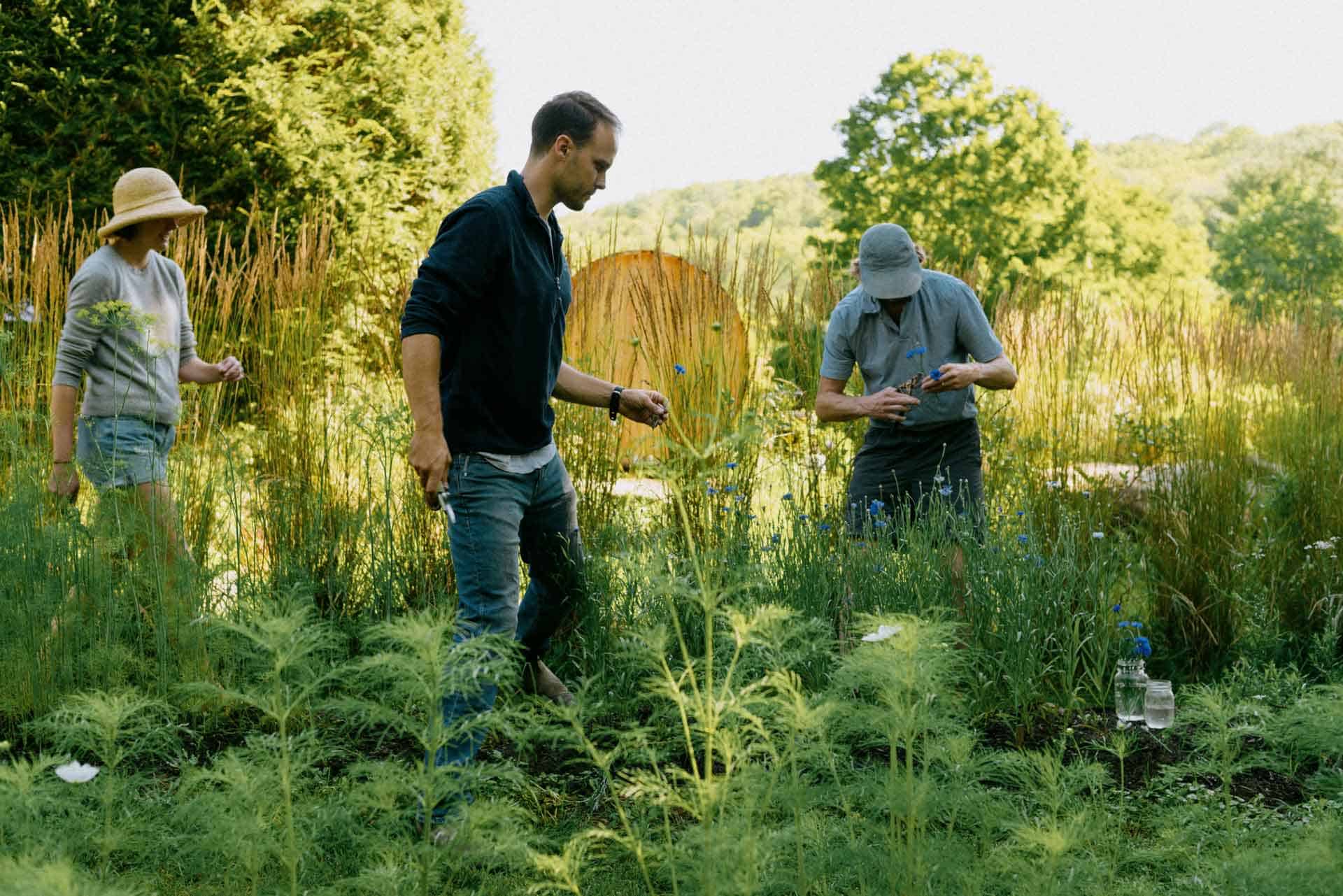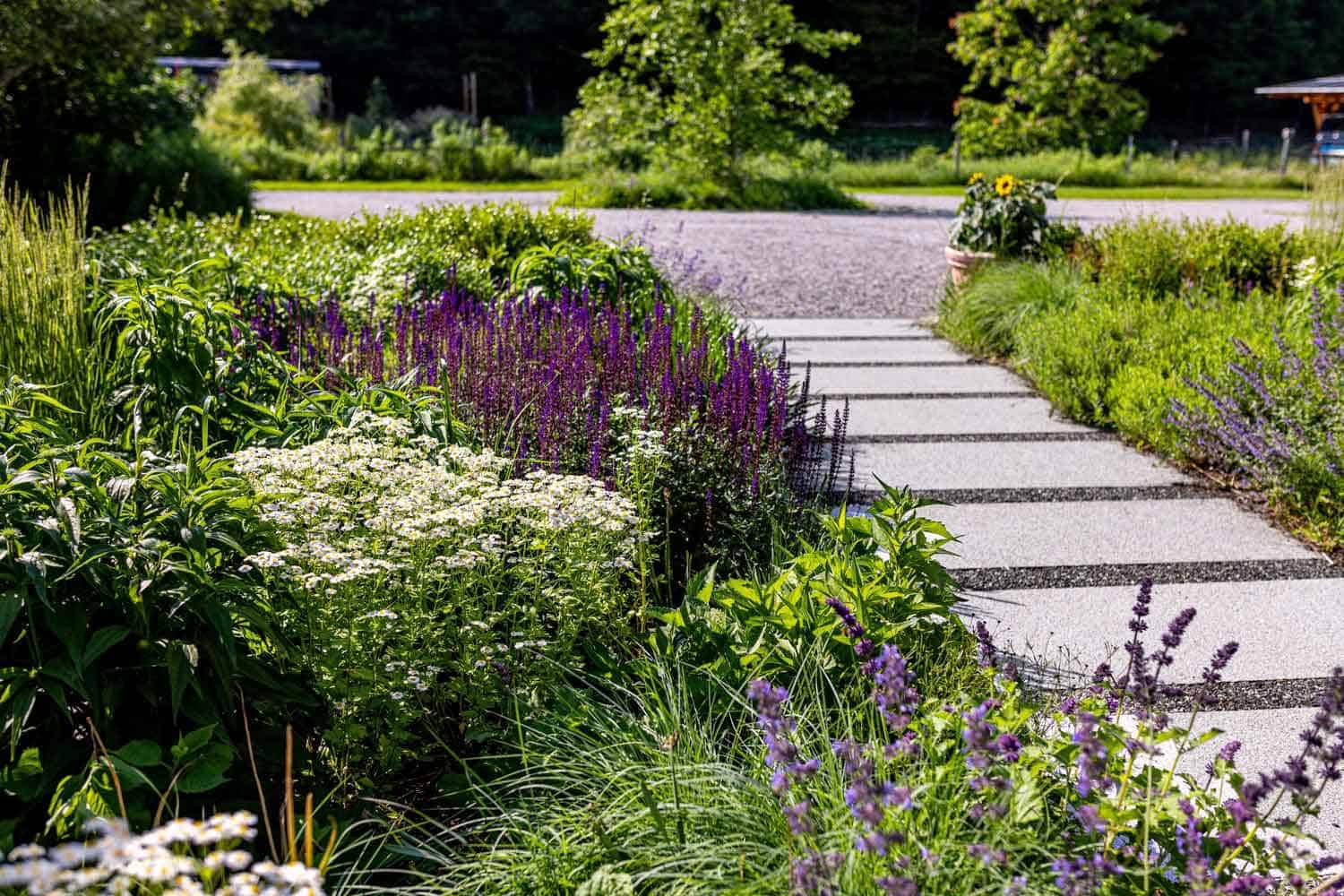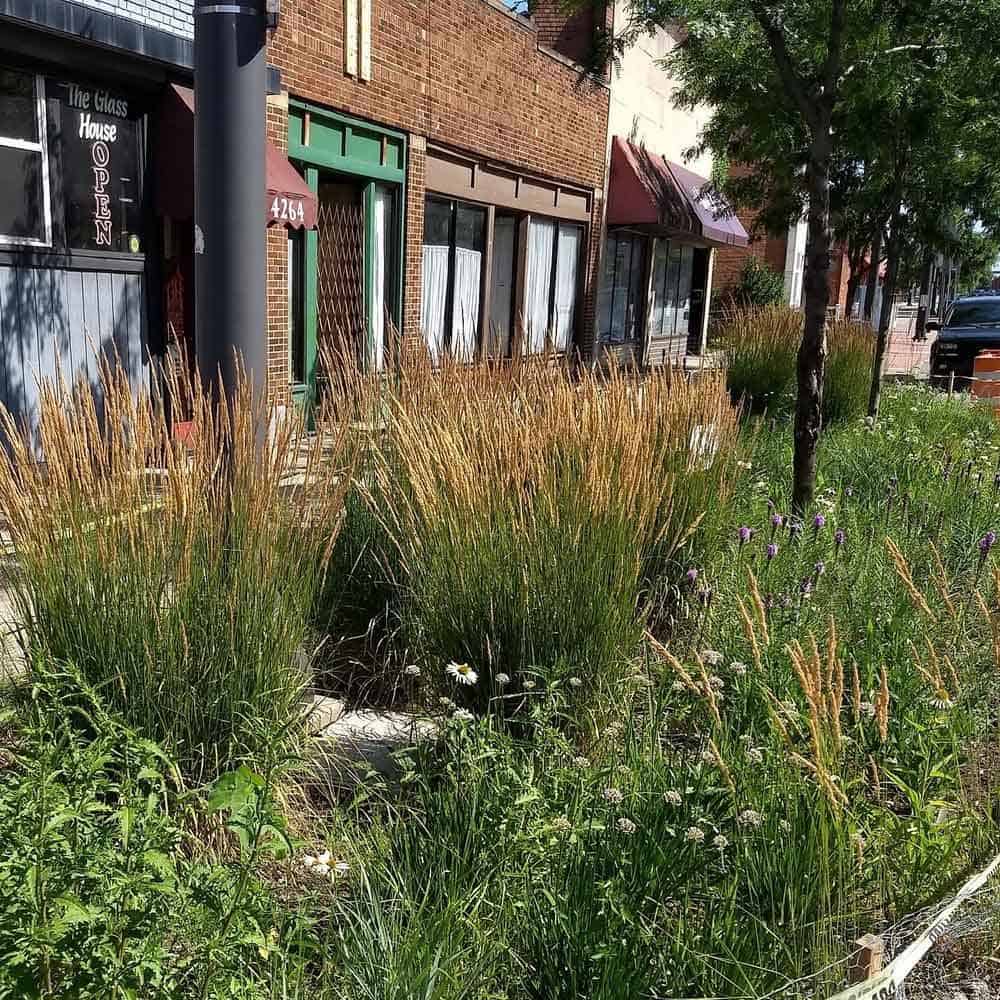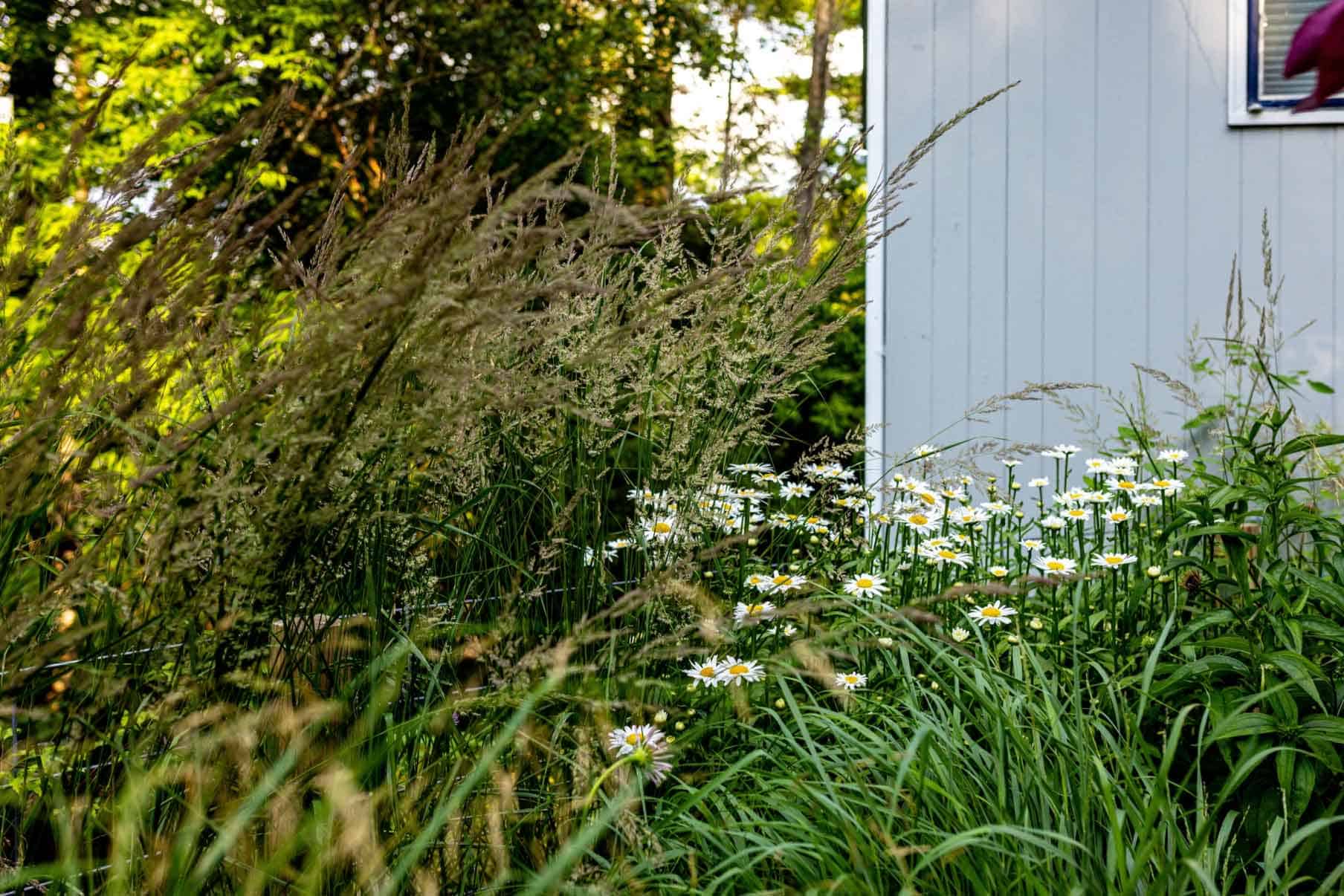Gavin Boyce-Ratliff is a landscape designer who grew up on a sheep farm in the green mountains of Vermont, where he developed an early appreciation for native New England flora and the historic landscapes found in both town and pasture. He has worked in landscape architecture offices in Vermont, Connecticut, and Maine, and holds a degree in landscape architecture from Cornell University. A certified horticulturist in several New England states, he strives to create landscapes grounded in their environment, culture, and circumstance. His firm GBR Landscape Design designs immersive, climate-forward landscapes.
Marshall Cutchin: Tell us a little about yourself and your journey to becoming a landscape designer. You weren’t originally planning to study horticulture and landscape design, were you?
Gavin Boyce-Ratliff: I wasn’t. I always loved working outside and appreciated the beauty in the woods and meadows around where I grew up, but took a rather circuitous path into the profession– as I think most of us do. I went to school first to study creative writing, then agricultural business, and finally after years away from the classroom went back for a landscape architecture degree.

Much of my late teens and early twenties were spent out west, working on a ranch and then on landscape crews, and getting that mountain-west ‘bug’ out of my system. It wasn’t really until I moved back to Vermont that it started to click for me. I started working in a design/build office and pretty quickly fell in love with that instant gratification you get from being a part of a new landscape – or even just planting a new tree, when the first birds find a new perch. It felt like the perfect confluence of my various backgrounds and skill sets.
Marshall Cutchin: I love the way you describe your objective as designing “immersive, climate-forward landscapes that sit effortlessly in the surrounding landscape.” Maybe you could tell us how that translates into the types of projects you look for, and what ends up actually happening in the landscapes you work on?
Gavin Boyce-Ratliff: The most important thing I’ve learned in this line of work is the significance of the experience. We can all appreciate a beautiful garden, or sculpture, or piece of architecture from afar—even in a magazine spread—but it’s not until you can get into it that it really means anything to you. If you can’t touch it, and be surrounded by it, you get a diluted version and therefore a diluted opportunity to find joy in the garden. The best projects are the ones where there’s opportunity for immersion. Winding paths, dense plantings, and a sense of curiosity.
A ‘climate-forward’ garden, to me, is one that attracts you in today, but is prepared for tomorrow; beauty and ecological resilience don’t have to be at odds with one another. So in preparing for tomorrow, I think about what plants and materials are going to be best suited to the uncertainty of what comes next. This can mean looking for plants that thrive in a zone warmer than yours– knowing that’s what’s coming north sooner than later– while also being a bit more thoughtful about our inputs: irrigation, maybe most importantly. Native or not, if a plant requires regular intervention and babying in the garden, it’s probably not a good candidate for a resilient future garden.

To answer your question about the reality of all this on a project site: these are always my intentions, and the values I bring to the table when starting a new client relationship. But a garden is an incredibly personal thing, and my beliefs and best practices have to work in tandem with a client’s vision. Sometimes this means a revised palette of plants, or compromises on materials, but generally I’ve been very lucky to work with great clients who reach out because they share my interest in working with the landscape and not against it.
Marshall Cutchin: Most of us know that COVID brought a whole new level of energy to gardening in general. Do you sense an increase in interest in ecological gardening as well?
Gavin Boyce-Ratliff: One hundred percent. I seem to remember that the two most common questions on our local list-serve at the time were “Does anyone have a sewing machine so I can help make masks?” and “Where can I get pollinator friendly plants?” We all were forced to spend more time at home, and we haven’t looked back, I don’t think. Suddenly we’re sitting around at hours of the day when we never used to be home, and we start taking stock. Looking out the window a bit more frequently. Planning for ways to be the best at staying home, in true American fashion.
I think it’s the increased amount of time looking out the window that has led to an uptick in interest for ecological gardening. It’s a bit harder to turn a blind eye to the wildlife in your backyard when you start interacting with, and seeing it, more often. And it’s a bit less interesting to have a monoculture of boxwoods when you have to look at it all day. Suddenly we became a part of our gardens, when previously I think we were sort of just the decorators.
Marshall Cutchin: What are some of the favorite projects that you’ve worked on in the last few years? Are there notable successes? What about projects that turned into learning experiences, or that involved unexpected challenges?
Gavin Boyce-Ratliff: I’ve had the good fortune of working with terrific clients and inclusive collaborators from other disciplines the last few years. Some of my favorite projects have been the ones that allowed for creativity beyond the initial construction project. Something I’ll say often is that the planting design doesn’t really start until the plants are in the ground. We are not working within a static medium here, and the best designs are those that allow for and embrace the inevitable change that happens over time. These are my favorite projects to be a part of.
Every project is a learning experience to some degree. I’m always trying to take lessons away from each site and client relationship in order to keep growing. The more I can remember this on the difficult jobs, the better off I’ll be.

Marshall Cutchin: My guess is that few ecological landscapers can afford to be “purists” when it comes to using only native species. What’s your philosophy about integrating native species into an overall design? Do you have something like the “80/20” rule or some idea of proportion that usually makes the most sense?
Gavin Boyce-Ratliff: This is a sticky topic, and I’m not sure I’ll be able to eloquently sum up my thoughts on this right now. But here are a few….
We often can’t afford to, though nor should we be “purists” about it in my opinion.
There’s no doubt our native species play a critical role in our landscape: from serving as host plants for specific insects and wildlife, to co-evolving with pollinators to have just the right shape and color of flower, to often being much better suited to our sites, the collective movement towards increased native species in our gardens is so important.
To that end, I say when in doubt “plant native.”
But there are so many external factors at play, and I think we need to be really thoughtful right now about how we move into this next chapter in our gardens.
For one, climate change is moving species north at a rapid rate. Plants that were hardy in Rhode Island ten, twenty years ago are now marginally hardy up here in Maine. That’s crazy. But what that means is we’re going to get both the good and bad species as everything migrates north. Invasive species, tree-killing insects, and less reliable weather patterns will hit our native flora with a bang. And so it’s up to us to decide what we want our future landscapes to look like. If some of our birches and maples are going to become less and less resilient in the face of all this, do we just keep planting “native” for the sake of it? Or do we begin selecting species from further south that will better handle the next chapter? It’s unbelievably complicated, and I won’t pretend to be the right guy to answer these questions.
Similarly, gardening with native plants is only a piece of the puzzle. A backyard full of one hundred percent native species is wonderful, don’t get me wrong. But if it’s planted in the traditional, widely spaced grid with too much mulch, irrigation, and herbicides, how much better is it really?
To try and get back to your original question about my own design tendencies: I am not a purist and try to create gardens that are full of “right plant, right place” species. If the end product requires minimal input and “maintenance,” attracts and supports wildlife, and encourages people to get outside and spend time in their landscape, I consider that a success. But everyone has a slightly different approach to this topic, and there isn’t really one right answer, despite what some may say.

Marshall Cutchin: You mentioned in an earlier conservation that some people just like to be hands-on with their gardens, that they want things to do, or “putter” if you will. Native plant gardens have a reputation for requiring less maintenance, though we all know that can vary according to the situation. Is there a perfect balance for ecological friendly landscapes?
Gavin Boyce-Ratliff: This is something I’ve struggled with greatly on a personal level. I love to putter. In a past life, working with more traditional landscape companies, I developed a love for the smell of fresh mulch in March when everything is thawing and the warmth it brings sets off alarms in my head telling me spring is here. Same for cutting back perennials. I find it to be one of the most meditative tasks and something that brings me a lot of joy. But I have to balance this with the fact that many traditional “puttering” tasks are contradictory to what we are trying to do from an ecological perspective. So now I wait until spring to cut my perennials back, and only mulch gardens in their first year. After that, they get their own “mulch” from last year’s stalks and leaves, despite the itch I get in early March to just do all the things.
I think like anything, it’s important to find a balance and a compromise that feels good for you personally. Gardening, for the most part, is supposed to be something we do because we enjoy it. Otherwise it’s farming, or land restoration.
On a residential scale, just do your best. Consider the greater ecosystem before adding new plants or interventions, but don’t let it suck the joy out of it for you. It’s my belief that in order for us to invest in large-scale conservation efforts, and to get passionate about environmental stewardship on a global scale, we have to fall in love with nature in our own backyards. So if a patch of non-native bulbs, and some more traditional gardening techniques bring you enough joy to want to protect the landscapes beyond your fence line, that’s a positive.
Marshall Cutchin: How does the availability of native plant species—or lack thereof—determine what you can do in a design? Do you find yourself looking hard for sources? Do you think that growers and retailers are slowly waking up to the demand?
Gavin Boyce-Ratliff: Supply has been really great in recent years here in New England. Many nurseries have a host of previously hard-to-find natives, and they fly off the shelves. One of my favorite local nurseries has recently gotten into the ‘local ecotype’ game, where not only are they selling “natives”, but they’re growing them from locally collected seed. This makes for hardier, better adapted plants, which means better success rates in a client’s garden.
Marshall Cutchin: Your work seems to cover a really wide geographic area. Is that intentional? Given that what is truly native or locally appropriate can be very region-specific, how does that affect how you approach a project in Ohio, for example, versus a project in Maine?
Gavin Boyce-Ratliff: Geography aside, I’m looking for thoughtful clients and for landscapes that excite me. Whether it’s five miles or five thousand miles away matters less to me. But I do think it’s paramount that landscapes reflect their local vernacular, and I always do my best to be sensitive to this in new areas.
I was working on a planting design in the Yellowstone area a few years ago, and we made sure to consult closely with a host of local experts who knew the native ‘look’ better than we did. The best designers, many of whom I’ve admired and studied as I came into this profession, have done a great job of acknowledging their limitations, and injecting local knowledge into projects further afield. It always makes for a more successful, and more beautiful landscape in the end.
Marshall Cutchin: Any advice to gardeners and homeowners who are just starting to get involved in gardening for biodiversity?
Gavin Boyce-Ratliff: I think similar to one of our previous discussions, the most important thing is to first find that spark that will energize you moving forward. Garden in a way that brings you joy, and the desire to share some with the bees & butterflies will follow.
For those already down this rabbit hole with us, I’d just suggest staying open to new ideas. This ecological landscape movement was borne out of a desire to approach gardening more thoughtfully and holistically. So it’s important to maintain that spirit, continuing to experiment and appreciate new viewpoints within the world of gardening.
Marshall Cutchin: Lastly, tell us a little about where you see ecological gardening heading, or where you’d like it to head.
Gavin Boyce-Ratliff: I believe we’ll continue to see fads come and go, the same way we always have, but the root of ecological awareness will remain and continue to grow. There doesn’t have to be one style within this approach to gardening, the same way there isn’t one aesthetic for all of the more traditional landscapes we’ve seen over the centuries.
I hope –and am beginning to observe– that this can become a lifelong passion for anyone. Whether as a profession or a weekend hobby, I’m excited for us to become more of a nation of gardeners.
